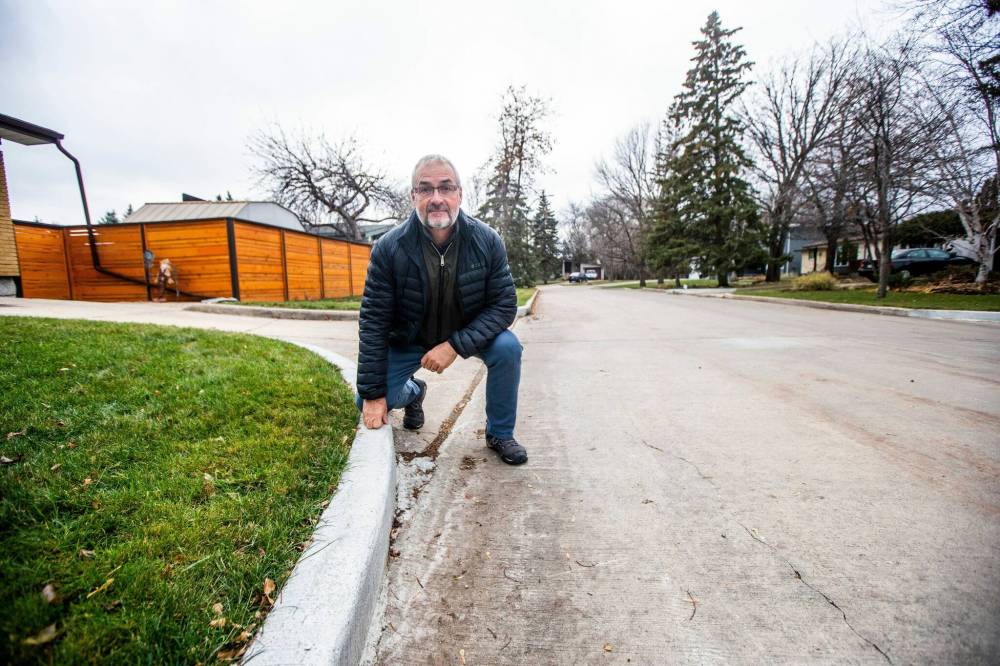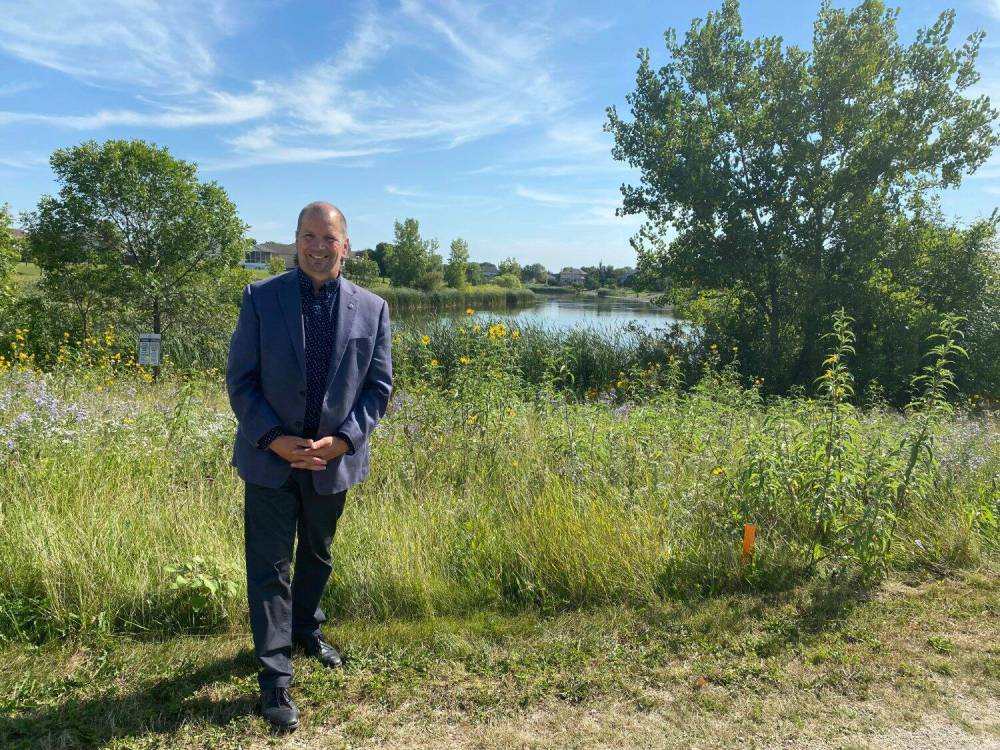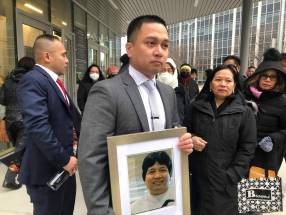Curb your enthusiasm for city repairs Certain jobs can take decades, city data show
Read this article for free:
or
Already have an account? Log in here »
To continue reading, please subscribe:
Monthly Digital Subscription
$0 for the first 4 weeks*
- Enjoy unlimited reading on winnipegfreepress.com
- Read the E-Edition, our digital replica newspaper
- Access News Break, our award-winning app
- Play interactive puzzles
*No charge for 4 weeks then price increases to the regular rate of $19.00 plus GST every four weeks. Offer available to new and qualified returning subscribers only. Cancel any time.
Monthly Digital Subscription
$4.75/week*
- Enjoy unlimited reading on winnipegfreepress.com
- Read the E-Edition, our digital replica newspaper
- Access News Break, our award-winning app
- Play interactive puzzles
*Billed as $19 plus GST every four weeks. Cancel any time.
To continue reading, please subscribe:
Add Free Press access to your Brandon Sun subscription for only an additional
$1 for the first 4 weeks*
*Your next subscription payment will increase by $1.00 and you will be charged $16.99 plus GST for four weeks. After four weeks, your payment will increase to $23.99 plus GST every four weeks.
Read unlimited articles for free today:
or
Already have an account? Log in here »
Hey there, time traveller!
This article was published 09/11/2022 (1125 days ago), so information in it may no longer be current.
It only took 28 years for a City of Winnipeg crew to repair a curb on Tyrone Bay.
While that might seem like an extremely long time, consider that resident Calvin Hawley was told it would take 44 years, when he reported it in 1993. The city got it done in 2021.
Currently, if the curb on a residential street gets damaged, it may take a couple of decades for the city to repair it.
In some cases, residents can expect an estimated wait of 20 years, city data show. Among 311 service requests, the estimated wait time is second only to the pruning of non-hazardous trees, which have an estimated 25-year wait.
Hawley said he’s disappointed decades-long wait times are still predicted for such repairs.

“What message does that send to citizens of our fine city when you report a problem and get a report back on the tracking number that says it’s targeted for resolution 20 years in the future? Where does that sit on the scale of credibility or reasonable (nature of) an estimate?” said Hawley.
Curb repairs on residential streets are a priority if they pose a safety hazard or interfere with drainage. Repairs can also be handled more promptly if the street is in good condition, which makes it unlikely the curb will soon be fixed through a total reconstruction project, said city spokesman Kalen Qually.
Hawley jokes his curb was repaired 16 years ahead of schedule.
“Something’s broken in the system as a whole, (in terms of) how things get triaged,” he said.
“What message does that send to citizens of our fine city when you report a problem and get a report back on the tracking number that says it’s targeted for resolution 20 years in the future?–Calvin Hawley
The timeline to fix a curb largely depends on the situation at each location and how it compares to that of other city tasks, said Michael Cantor, the city’s manager of streets maintenance.
“It’s a matter of resources. If there were more resources and a decision by the city to put priority on repairing curbs earlier, than resources need to be provided adequately (by city council) to meet that. These are our level of services that were set years ago and we’re working to meet them,” said Cantor.
For non-hazardous damage, the average wait to repair a curb on major routes is five years, which rises to 10 years for collector streets and 20 years for residential ones.
Curb damage is often seen as an aesthetic issue when the broken infrastructure doesn’t pose a safety risk or hinder drainage, Cantor said.
Those repairs compete for city dollars against projects that have a more direct impact on safety, he said.
“I think that, at the end of the day, (curb damage is) the least impactful to safety and mobility of people and vehicles. You would prefer to, obviously, repair a sidewalk faster than a curb, because people are walking on sidewalks and we would like to keep it as a safe environment for them to walk,” said Cantor.
It makes sense that many curb repairs are ranked less urgent than other projects, said Coun. Janice Lukes, chairwoman of the public works committee.
“I’d put (fixing) potholes over curbs any day, personally, and it’s a matter of prioritizing within the budget that we have. If there are curbs that are causing a hazard and a danger, they need to be done. But if they’re not (a hazard) and other things are a higher priority, then they get done,” said Lukes.
“I’d put (fixing) potholes over curbs any day, personally, and it’s a matter of prioritizing within the budget that we have.”–Coun. Janice Lukes
The estimated 25-year wait for non-hazardous tree pruning requests is also linked to resources, Qually noted.
“The (general) pruning cycle… is determined based on the number of trees in the public tree inventory and available resources. There (are) only so many resources available to prune the (approximately) 300,000 boulevard and park trees in the city’s inventory,” wrote Qually, on behalf of city forester Martha Barwinsky.
Some Winnipeggers faced with relatively shorter waits also questioned the speed of service. Former city councillor Shawn Nason, a vocal critic of city service waits during his time on council, says he’s dealing with a delay at his own property.

It is expected to take two years to replace sod at his Canterbury Park home after the city tore up grass at the edge of his property to fix a watermain break in August 2021, he said.
“They didn’t restore the grass, the sod. I just have… a mucky mess that remains,” said Nason.
He urged the city to ensure it has the resources to speed up response times.
“(We need) the people to be able to do the work. Or, if you’re having to contract out, (have) those contracts be sound contracts with time frames attached,” he said.
Nason ran for re-election in Transcona and finished in second place to Russ Wyatt, who had represented the ward from 2002 to 2018.
joyanne.pursaga@freepress.mb.ca
Twitter: @joyanne_pursaga

Born and raised in Winnipeg, Joyanne loves to tell the stories of this city, especially when politics is involved. Joyanne became the city hall reporter for the Winnipeg Free Press in early 2020.
Our newsroom depends on a growing audience of readers to power our journalism. If you are not a paid reader, please consider becoming a subscriber.
Our newsroom depends on its audience of readers to power our journalism. Thank you for your support.
History
Updated on Wednesday, November 9, 2022 7:10 PM CST: typo fixed








